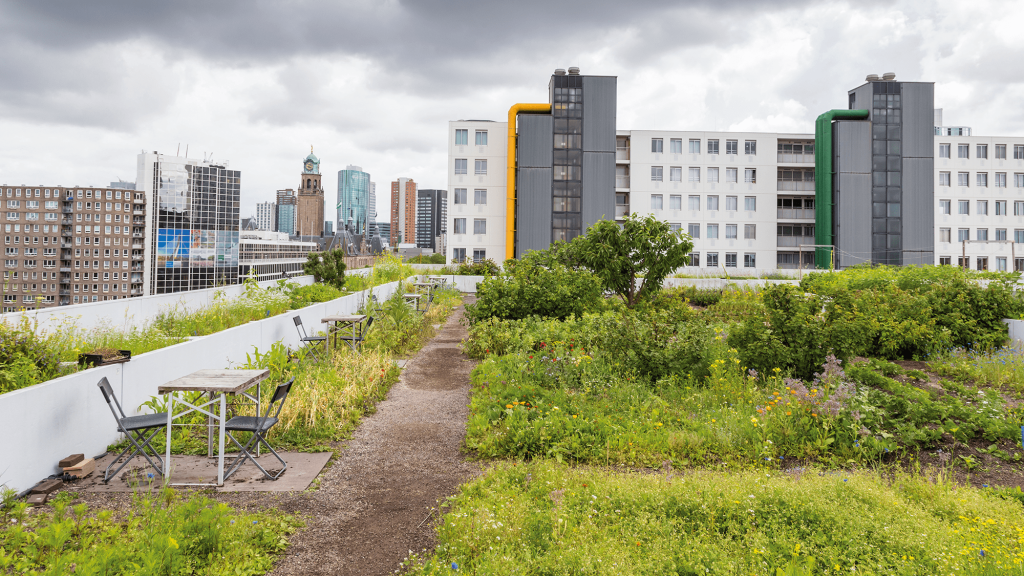Retention roof
In addition to sedum and nature roofs, there are retention roofs on which a large amount of water can be stored. On a retention roof, a water storage package is applied. This is done by placing crates on the roof structure that have a large water storage capacity. The water in these crates is retained or slowed down. A green roof will be placed on top of the crate construction that uses the water underneath.
Existing roofs are usually not designed for the weight of a retention roof. Such a roof is more difficult to construct yourself. If you are interested in a retention roof, hire a specialized company.
Cost
A retention roof is more expensive than a sedum or natural roof. This is because of the additional buffering capacity to be incorporated.
Space use
A retention roof costs no extra space in your yard.
Difficulty
It is important that the roof can bear enough weight to prevent leaks. The roof structure must have enough load-bearing capacity. There is water on the roof all the time, so everything must be properly finished and checked.
Earthmoving
No earth moving is required. However, the substrate and plants must be installed on the roof.
Maintenance
As in the garden, plants on the roof also need maintenance. Fertilizing annually is good for the plants. Tip: Before installing, think about maintenance. Checking drainage is important.
Climate Goals
Retention roofs reduce heat stress and can store water for reuse. The roof also contributes to biodiversity through planting.
Biodiversity
Contribution to improving biodiversity
Points of interest
- The roof should be able to support at least 100 kg/m2.
- Check the drains regularly.
- It is necessary to have an overflow option for when the repository is full.
- Annual fertilization benefits the planting.
- Grasses and weeds should be kept away from planting as much as possible.
